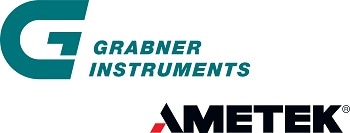Measuring the flashpoint of waste liquids on waste disposal plants is important as the liquids need to be categorized for the combustion process. Just like transport regulations, the limits are 21 °C and 38 °C, which are the limits for the Austrian waste disposal plant.
The samples are oils, pure liquids, varnishes, paints, and many types of mixtures with extremely flammable components. On account of the composition of these samples, the flashpoint range is broad but in a majority of cases, it is below 40 °C. Therefore, the MINIFLASH FLPL is a suitable unit for this application.
MINI FLASH Versus PM
In several circumstances, a flashpoint tester is readily available (typically a PM). Since there is a large sample volume and the cleaning of the tester is laborious, the MINIFLASH is the perfect choice as it requires a sample volume of only 1 mL and is easy and quick to clean. Besides, the cooling time of the Abel Pensky or Pensky Martens is drawn-out due to the large sample volume. The total measuring time for flashpoint measurements below ambient temperature is around five times faster with the MINIFLASH.
Problem
When the waste is transported to the plant, it is not cooled and therefore very volatile and flammable components can evaporate. That would mean that the flashpoint measurement is not reproducible, mostly because the sample is stored at an ambient temperature over prolonged periods of time. Therefore, comparison measurements must be handled carefully.
Solution
The drawn sample must be cooled down to around 15 °C before the estimated flashpoint. Since the flashpoint is mostly not known, it is better to store the sample in an explosion-proof deep-freezer.
Measuring Procedure
- Set the start temperature for both testers to be 15 °C below the estimated flashpoint. If it is not identified, fix a very low start temperature.
- The cooled sample has to be placed in the sample cups of the MINIFLASH and the other flashpoint tester, and the measurement should be started straightaway. The following settings have to be used for the MINIFLASH:
Rate = 3 °C/minute
Step = 2 °C
Air = 0.1 second
The stirrer can be used, as it might be required for certain kind of samples.
- If extra comparison measurements need to be carried out, it is suggested that a new sample is always taken and used and the test has to be done using both testers concurrently.
Conclusion
If the above-specified procedure is used, an excellent correlation between the MINIFLASH and the reference unit can be realized. However, the MINIFLASH’s advantages are certainly convincing.

This information has been sourced, reviewed and adapted from materials provided by Grabner Instruments.
For more information on this source, please visit Grabner Instruments.